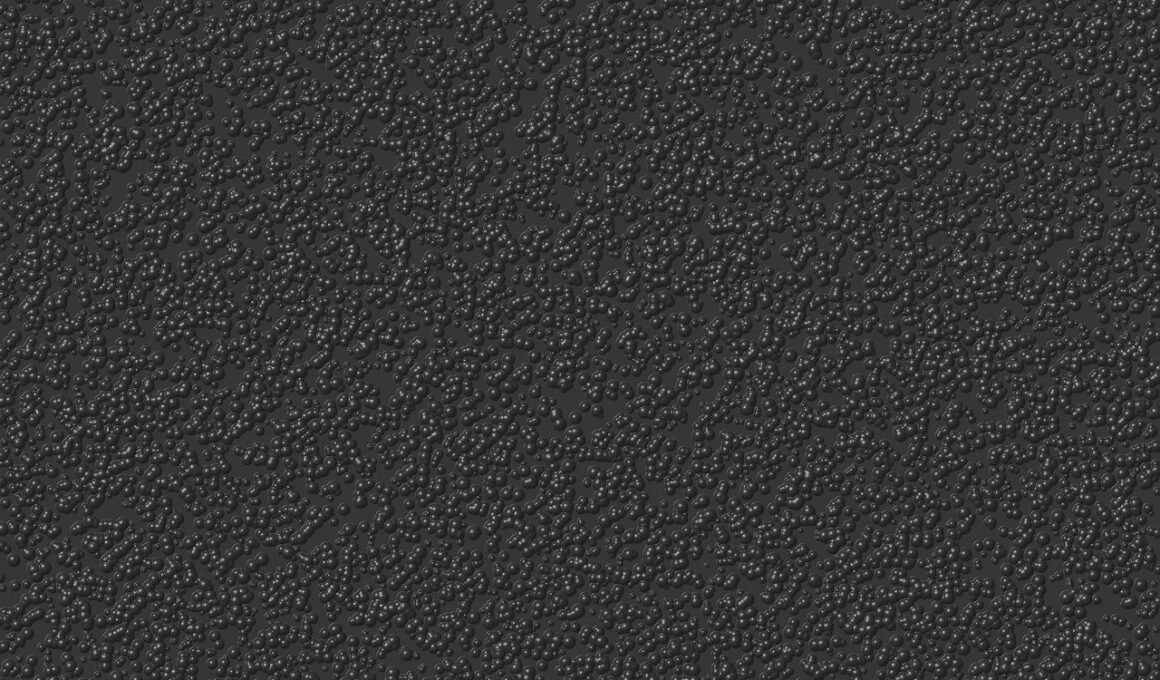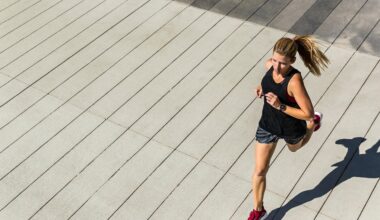Common Cardio Blisters and How to Prevent Them
Cardiovascular training is a great way to maintain fitness, but it can lead to certain injuries, particularly blisters, which are common among runners and those engaging in high-impact aerobic work. These blisters form due to friction between the skin and footwear during activities like running, cycling, or any workout requiring repetitive motion. Knowing how these blisters develop can help individuals be proactive. Areas of the foot that are most susceptible include the heels, toes, and balls of the feet, largely due to moisture and ill-fitting shoes. Blisters can save you from taking your workout routines to the next level, which can be frustrating. In addition, blisters can be painful and hinder performance, leading to stop-start training patterns. To promote effective training and longevity in cardiovascular exercises, individuals must learn ways to prevent and treat these blisters. Proper footwear can significantly reduce the chance of developing blisters while exercising. It’s also essential to keep feet dry and well-protected with the right socks to minimize friction, especially in hotter conditions. Planning workouts around personal limitations is also wise.
Understanding the Causes of Blisters
The first step in preventing blisters is to understand their causes. Blisters primarily develop when shoes do not fit correctly or when moisture builds up around the skin. Activities that involve repeated pressure can exacerbate this issue over time. Runners are particularly vulnerable to foot blisters, often resulting from their shoes, socks, and running techniques. High-friction areas are prone to blister formation, so identifying those places on your feet is crucial. A common misconception is that blisters only occur in those who are inexperienced or are newly active. Even seasoned athletes can suffer from blisters. The best defense is proper preparation and knowledge of your body’s feedback. Prioritize wearing well-fitting shoes made specifically for athletic training, and consider using moisture-wicking socks to manage sweat on your feet. In addition, adjusting your technique and ensuring a solid warm-up can help make each cardio workout more efficient without leading to injuries, including blisters. Recognizing the signs of creation can also help you get ahead of the issue early.
Another aspect of blister prevention involves the right choice of socks. Choosing socks that fit snugly, are made from breathable materials, and minimize moisture can make a substantial impact on blister occurrences. Avoiding cotton socks is advisable since they tend to retain moisture, leading to increased friction. Opt for synthetic or merino wool fabrics that wick moisture away and dry quickly. These materials can help maintain a blister-free cardio workout by smoothing out foot movement within shoes. For those who prefer, blister pads, or specialized anti-blister products, can provide extra protection. Additionally, utilizing lubricants or blister prevention products can significantly lessen friction. Apply these products to trouble spots on your feet before engaging in any intense cardio workout. It is essential, also, to take proper care of your feet naturally by maintaining good hygiene. Regularly checking your feet for any signs of irritation can catch potential blisters before they escalate.
Recognizing Early Signs of Blisters
Recognizing the early signs of blister formation is key in preventing more severe issues. Early symptoms include redness or a feeling of discomfort. The earlier you address discomfort, the less likely it ranges from irritation to full-blown blisters. For instance, if you feel a hot spot on your foot while running, this is an excellent indicator that something is wrong and immediate action is warranted. Taking a break to assess the situation can save you from having to deal with a painful blister. Ensuring your shoes fit closely without being too tight provides adequate space for socks and toes can also help. Additionally, consider switching shoes during workouts to allow different pressures on your feet. When you change up your footwear, it can provide necessary relief, especially during longer cardio sessions. This can prevent consistent pressure points that often lead to blister formation. Progressively adapt to new shoes and shocks, as improper adaptation can cause undue strain on your feet leading to unnecessary interference in training routines.
After understanding the basic principles of blister prevention, focus on treating blisters when they occur. If you get a blister, it’s essential not to pop it unless absolutely necessary, as this can lead to infection. Instead, cover it with a proper blister bandage to protect it from further irritation while it heals. Keeping the area clean and dry allows for quicker recovery. If the blister is small and does not require popping, simply leave it alone. Allowing blisters to heal independently can some time lead to less severe or recurring occurrences in the future. It’s important to keep the location protected and avoid additional friction. If you’re suffering from blisters more regularly than expected, it may be worth consulting a specialist or sports therapist. They can evaluate your technique, footwear, and gait to identify potential underlying problems. Furthermore, using strapping or durable padding on known trouble areas can make a significant difference. Prevention is about being proactive and mitigating the chances that training, whether running or cycling, leads to those pesky blister formations.
Long-Term Strategies for Blister-Free Workouts
In conclusion, developing a long-term strategy to prevent blisters is crucial for all fitness enthusiasts engaged in cardiovascular training. Awareness about suitable footwear, socks, and appropriate shoe-wearing techniques can lead to a significant reduction in blister incidents. Focus on gradual changes to your training routine, allowing your feet to adapt properly to new footwear styles. Avoiding high-friction situations and managing moisture can create a better workout experience. Exploring different types of training shoes based on specific activities can also be beneficial. Each sport may require a distinct approach to footwear to minimize issues effectively. Therefore, it’s a good idea to seek expert advice or do thorough research when investing in new shoes. Also, always prioritize comfort over style when it comes to footwear choices. Ultimately, investing time in blister prevention can save you discomfort in the long run. Embracing a holistic approach that combines awareness, prevention, and care will assist any fitness enthusiast in sticking with their cardiovascular goals. Committing to this practice guarantees healthier feet and a more enjoyable experience in pursuit of fitness.
Finally, it’s equally important to reinforce the community aspect of fitness. Engaging with a community of like-minded individuals can further motivate the commitment to proper footwear and training techniques. Sharing experiences and advice can foster a culture of prevention and improvement when it comes to cardiovascular exercises. Join groups, forums, or social media channels to stay updated on the latest tips and tricks for blisters prevention while training. Furthermore, personal stories from others can enrich your understanding and encourage a proactive mindset towards injury prevention. Engaging in discussions can allow athletes at any level to learn and adapt their training routines for optimal performance. By embracing collective knowledge, individuals can efficiently navigate issues surrounding blisters while enhancing overall fitness habits. Whether sharing insights into successful and effective routines or swapping footwear recommendations, community-based connections offer valuable resources. In these exchanges, individuals can maintain their passion for cardiovascular health while also avoiding common pitfalls like blisters down the line.


